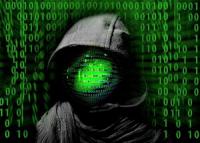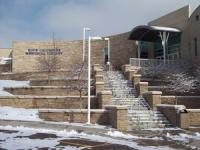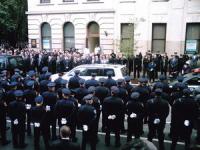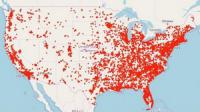-
Responding to the rise in domestic terrorism: Don’t forget prevention
The April attack on a synagogue in Poway, California, was the latest demonstration of the rise in extremist violence in the United States committed not by “jihadists” inspired by ISIS or other international terrorists, but by white supremacists, neo-Nazis or other right-wing groups. Eric Rosand writes in Lawfare that with the Tree of Life Synagogue attacks still fresh in many Americans’ minds, post-Poway discussions further highlighted how the resources and tools available to prevent right-wing extremist violence or domestic terrorism in the United States are dwarfed by those available to deal with the jihadist-inspired violence that data shows to be a much lesser threat. Rectifying this imbalance requires urgent attention.
-
-
Ghost guns are everywhere in California

Feds say nearly a third of firearms recovered in California are homemade, unserialized, and untraceable. Experts say the accessibility of ghost guns is aided by a cottage industry of retailers selling nearly completed firearms that require no screening to purchase.
-
-
UNC shooting has these things in common with other campus shootings
The 30 April shooting at the University of North Carolina at Charlotte follows a familiar pattern of mass shootings at college campuses in the United States. If authorities better understood these patterns, they may be able to prevent future shootings.
-
-
Transnational organized crime and national security
Traditional organized crime, ranging from the Italian-American mafia to street gangs, has long been a target of American law enforcement efforts. Eric Halliday writes in Lawfare that unlike purely domestic organized crime, transnational organized crime, defined by the Justice Department as groups that pursue criminal activities across geographic boundaries, has profound national security implications. The FBI warns that transnational organized crime poses a diverse array of national security threats related to border security, government corruption both in the United States and abroad, energy and “strategic material” markets around the world, and “logistical and other support to terrorists and foreign intelligence services.”
-
-
The darker side of the dark web: Weapons trade

Debates over gun regulations make headlines across the world, but there’s an underground operation for weapons that has drawn very little attention – until now. Researchers crept into the dark web to investigate how firearms are anonymously bought and sold around the world.
-
-
“Hardened” schools are not safe from gun violence

Hardening of schools seems to be a questionable endeavor, given the dearth of evidence regarding effectiveness, says an expert. A comprehensive review of the literature from 2000 to 2018 regarding school firearm violence prevention, found no programs or practices with evidence that they reduced such gun violence.
-
-
How Columbine became a blueprint for school shooters

When twelve students and one teacher were killed in Littleton, Colorado twenty years ago, it not only became what at the time was the worst high school shooting in U.S. history. It also marked when American society was first handed a script for a new form of violence in schools. Since the 1999 tragedy at Columbine High School, we identified six mass shootings and forty active shooter incidents at elementary, middle or high schools in the United States. In twenty – or nearly half – of those forty-six school shootings, the perpetrator purposely used Columbine as a model.
-
-
Knife-crime assault data to help forecast fatal stabbings

Knife crime data from a 12-month period could be used to help forecast the London neighborhoods most likely to suffer a fatal stabbing the following year, according to latest research.
-
-
Studying Perry Mason to combat “innocence fatigue”
Forensic science historian Professor Ian Burney is studying the influence of Erle Stanley Gardner, creator of renowned TV attorney Perry Mason, in a bid to reveal the roots of the fascination with stories about wrongful criminal conviction. Burney hopes the study will help better understand some of the challenges facing today’s worldwide “innocence projects.”
-
-
It is safer to be a cop today than 50 years ago

There is no doubt that policing is a dangerous profession. But is it safer to be a cop today than it was fifty years ago? Yes, according to a study that analyzed police officer deaths (felonious and non-felonious) in the United States from 1970 to 2016.
-
-
Do armed guards prevent school shootings?
The presence of guns in schools is a fact of life for millions of American children. Forty-three percent of public schools had an armed law enforcement officer during the 2015-2016 school year. Does increasing armed school security could reduce deaths from active shootings or deter the attacks in the first place? Experts say the data is not encouraging. Guns have stopped some mass shootings — but not usually in schools.
-
-
Firearm deaths surges in school-age children
Firearm-related deaths in school-age children are increasing at alarming rates in the United States where homicide rates are about 6- to 9-fold higher than those in comparably developed countries. This epidemic poses increasingly major clinical, public health and policy challenges.
-
-
Recaptured Italian former militant Battisti admits 1970s murders

Former communist militant Cesare Battisti has admitted four murders carried out in the 1970s, during Italy’s so-called “Years of Lead,” weeks after being jailed in Italy for the killings that were part of a failed bid to spark a far-left revolution.
-
-
More mass shooting in states with permissive gun laws

States with more permissive gun laws and greater gun ownership have higher rates of mass shootings, and a growing divide is emerging between states with restrictive versus permissive gun laws. According to a new study, researchers found that in most years permissive states had higher mass shooting rates compared to restrictive states.
-
-
Studying how hate and extremism spread on social media
The ADL and the Network Contagion Research Institute will partner to produce a series of reports that take an in-depth look into how extremism and hate spread on social media – and provide recommendations on how to combat both.
-
- All
- Regional
- Water
- Biometrics
- Borders/Immig
- Business
- Cybersecurity
- Detection
- Disasters
- Government
- Infrastructure
- International
- Public health
- Public Safety
- Communication interoperabillity
- Emergency services
- Emergency medical services
- Fire
- First response
- IEDs
- Law Enforcement
- Law Enforcement Technology
- Military technology
- Nonlethal weapons
- Nuclear weapons
- Personal protection equipment
- Police
- Notification /alert systems
- Situational awareness
- Weapons systems
- Sci-Tech
- Sector Reports
- Surveillance
- Transportation
Advertising & Marketing: advertise@newswirepubs.com
Editorial: editor@newswirepubs.com
General: info@newswirepubs.com
2010-2011 © News Wire Publications, LLC News Wire Publications, LLC
220 Old Country Road | Suite 200 | Mineola | New York | 11501
Permissions and Policies
Editorial: editor@newswirepubs.com
General: info@newswirepubs.com
2010-2011 © News Wire Publications, LLC News Wire Publications, LLC
220 Old Country Road | Suite 200 | Mineola | New York | 11501
Permissions and Policies
